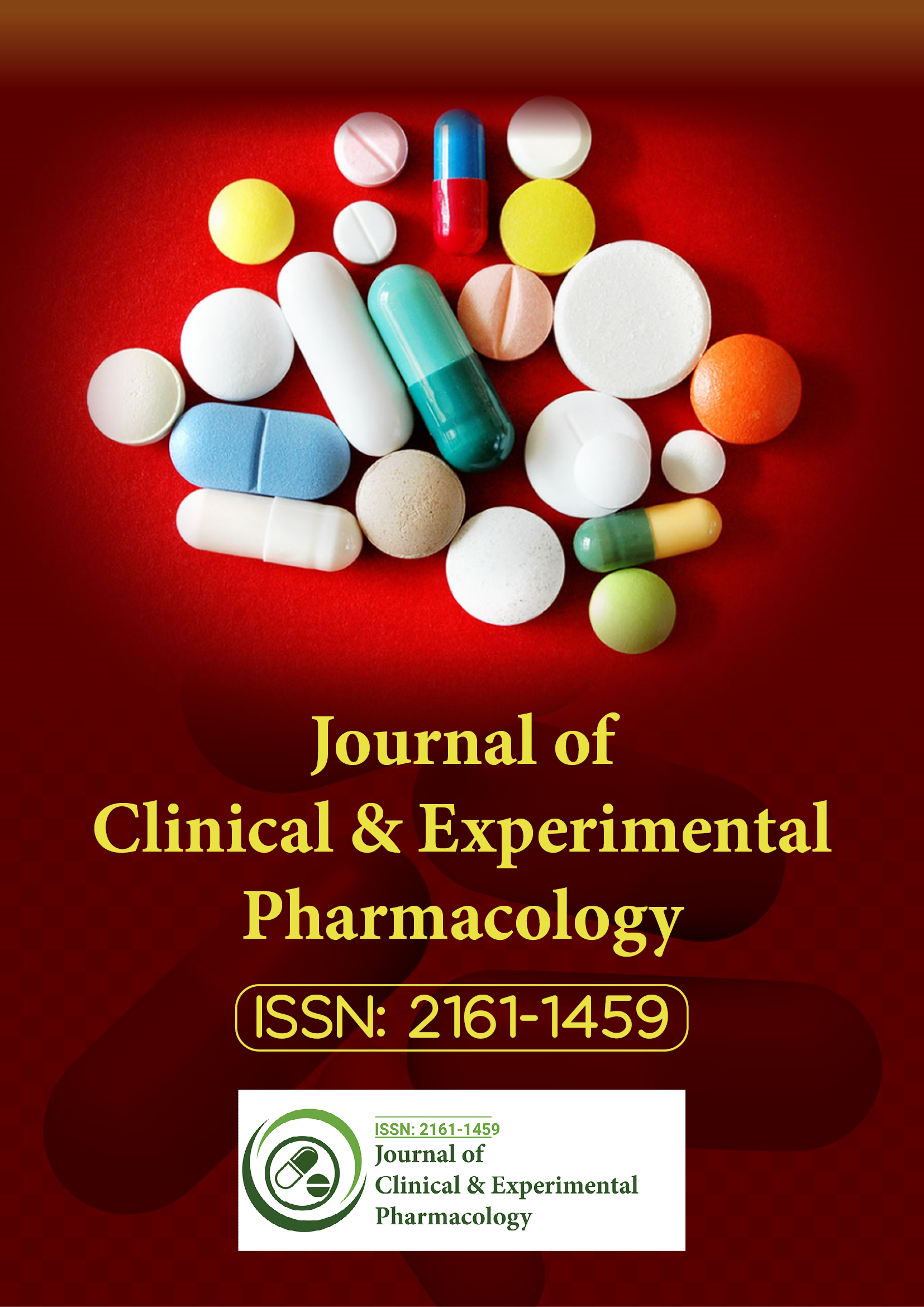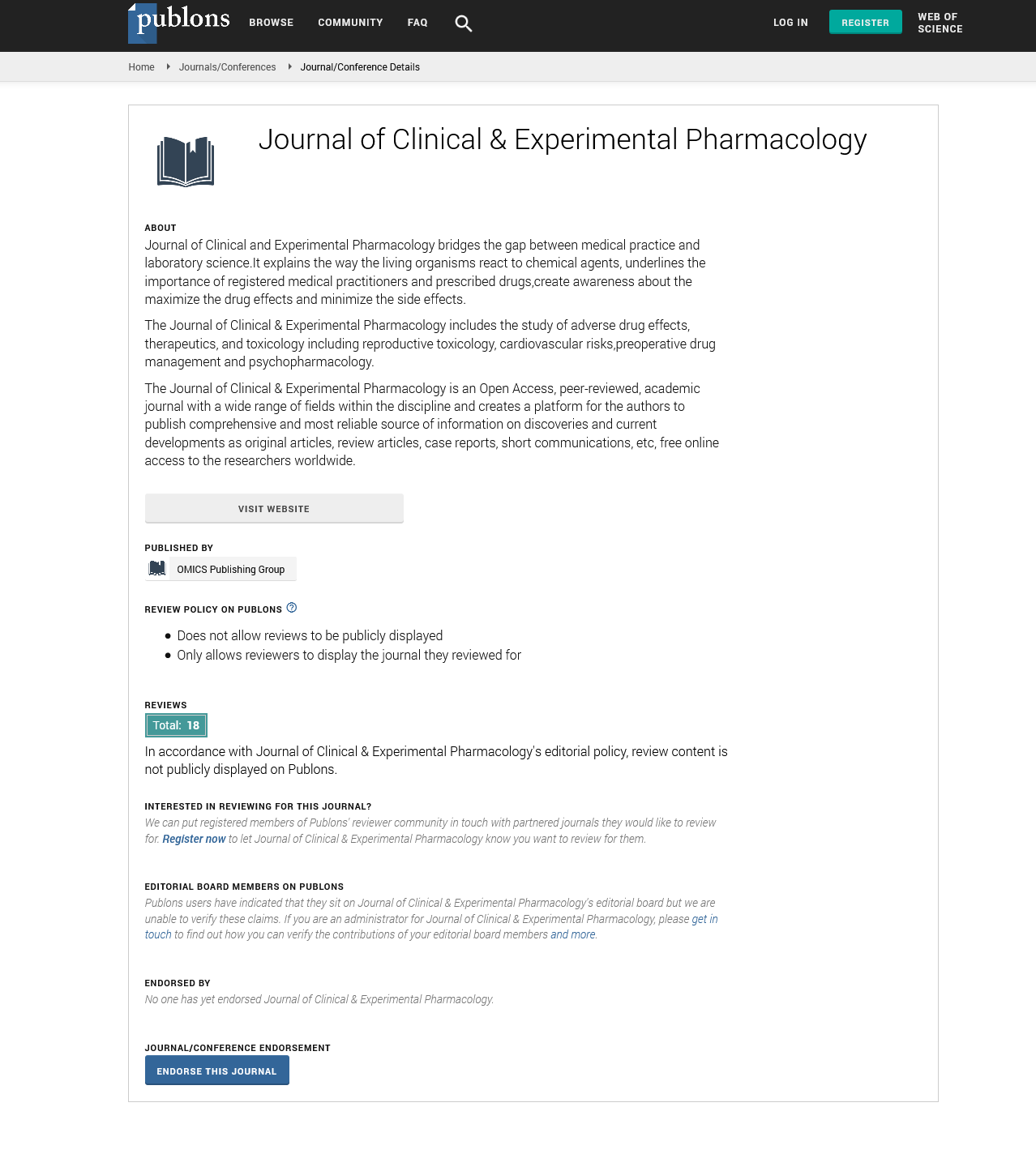Indexed In
- Open J Gate
- Genamics JournalSeek
- China National Knowledge Infrastructure (CNKI)
- Ulrich's Periodicals Directory
- RefSeek
- Hamdard University
- EBSCO A-Z
- OCLC- WorldCat
- Publons
- Google Scholar
Useful Links
Share This Page
Journal Flyer

Open Access Journals
- Agri and Aquaculture
- Biochemistry
- Bioinformatics & Systems Biology
- Business & Management
- Chemistry
- Clinical Sciences
- Engineering
- Food & Nutrition
- General Science
- Genetics & Molecular Biology
- Immunology & Microbiology
- Medical Sciences
- Neuroscience & Psychology
- Nursing & Health Care
- Pharmaceutical Sciences
Opinion Article - (2025) Volume 15, Issue 3
Biopharmaceutical Characterization of Oral Insulin Formulations: Current Status and Future Prospects
Michael Richards*Received: 06-Jun-2025, Manuscript No. CPECR-25-29371; Editor assigned: 09-Jun-2025, Pre QC No. CPECR-25-29371 (PQ); Reviewed: 23-Jun-2025, QC No. CPECR-25-29371; Revised: 30-Jun-2025, Manuscript No. CPECR-25-29371 (R); Published: 07-Jul-2025, DOI: 10.35248/2161-1459.25.15.487
Description
Insulin therapy has remained the cornerstone in the management of diabetes mellitus, particularly type 1 diabetes and advanced type 2 diabetes. Since its discovery, insulin has been primarily administered through subcutaneous injections, a route that can be associated with discomfort, inconvenience and reduced patient adherence. These limitations have fueled extensive research into developing oral insulin formulations, a goal that has proven scientifically challenging due to the unique physicochemical and biological properties of insulin.
Insulin is a peptide hormone consisting of 51 amino acids with a molecular weight of approximately 5.8 kDa. Its large size and susceptibility to enzymatic degradation in the Gastrointestinal (GI) tract present major obstacles to oral delivery. Proteolytic enzymes such as pepsin, trypsin and chymotrypsin readily degrade insulin before it can be absorbed. Additionally, insulin is hydrophilic and poorly permeable across the intestinal epithelium, limiting its bioavailability even if it survives enzymatic digestion.
Biopharmaceutical strategies aimed at overcoming these challenges focus on protecting insulin from degradation, enhancing its absorption across the gut barrier and ensuring it reaches systemic circulation in a therapeutically effective form. Several approaches have been explored, including the use of enzyme inhibitors, permeation enhancers, mucoadhesive agents and nanocarriers. Each strategy addresses a different aspect of the oral delivery barrier, often used in combination to improve efficacy.
One approach involves encapsulating insulin in polymeric or lipid-based carriers that shield it from acidic pH and enzymatic degradation. Enteric-coated nanoparticles, liposomes and solid lipid nanoparticles are being evaluated to protect insulin in the stomach and release it in the small intestine. Polymers such as chitosan and alginate are used for their mucoadhesive properties, helping the drug adhere to the intestinal wall and increase its residence time for better absorption.
Permeation enhancers represent another strategy. These agents transiently open tight junctions between epithelial cells, allowing insulin to pass through the paracellular pathway. Compounds such as bile salts, surfactants and fatty acids have been used to facilitate this process. While effective in increasing permeability, their long-term safety remains a concern, as repeated opening of tight junctions may compromise intestinal barrier integrity.
Enzyme inhibitors can be co-administered with insulin to reduce proteolytic degradation. Inhibitors targeting trypsin and chymotrypsin have demonstrated partial success in preserving insulin structure. However, balancing the inhibition of digestive enzymes without interfering with normal GI function remains complex. Novel delivery systems aim to localize enzyme inhibition to specific regions of the GI tract, minimizing systemic exposure and adverse effects.
Nanotechnology has opened new possibilities for oral insulin delivery. Nanoscale carriers can be engineered to respond to physiological triggers such as pH or glucose levels, allowing for controlled and targeted insulin release. Some platforms incorporate glucose-sensing elements that release insulin in response to rising blood sugar, mimicking physiological feedback mechanisms. These developments hold promise for improving glycemic control and reducing the risk of hypoglycemia associated with fixed-dose insulin therapy.
Advancements in bioadhesive and penetration-enhancing systems have also improved intestinal uptake. Insulin can be loaded into micelles, dendrimers, or self-emulsifying drug delivery systems that enhance solubility and absorption. In vitro and in vivo studies have demonstrated that such systems can significantly improve the bioavailability of insulin compared to free drug, although they still fall short of matching the predictability and efficiency of parenteral administration.
Clinical trials on oral insulin formulations have been ongoing for years, with several products advancing to later stages of development. ORMD-0801 and NN1953 are among the better-known candidates, showing promising safety and tolerability profiles. However, achieving consistent and sufficient bioavailability remains a challenge. Inter-individual variability in absorption, the influence of food and GI conditions and relatively low systemic exposure levels have hindered regulatory approval so far.
Despite these setbacks, oral insulin offers theoretical advantages beyond patient convenience. It may provide more physiological insulin delivery by reaching the liver directly via the portal circulation, mimicking endogenous insulin secretion and potentially improving metabolic control. This hepatic-first effect is not achieved with subcutaneous insulin, which first circulates systemically before reaching the liver, sometimes resulting in suboptimal regulation of hepatic glucose output.
Regulatory considerations for oral insulin are stringent. Bioequivalence, pharmacokinetics and immunogenicity must be carefully assessed. Any delivery system must ensure consistent performance without introducing unacceptable risks. Moreover, the manufacturing of complex delivery platforms requires standardization, scalability and cost-effectiveness to be viable for commercial production and patient access.
In conclusion, the development of oral insulin remains a high-priority goal in diabetes care due to its potential to enhance adherence and improve quality of life. Despite formidable biopharmaceutical barriers, progress has been made through protective carriers, permeation enhancers, enzyme inhibitors and nanotechnology-based solutions. Although no oral insulin product has yet achieved regulatory approval for widespread clinical use, continued refinement of delivery systems and clinical trial design is expected to yield more effective candidates. As research progresses, the realization of a safe, effective and patient-friendly oral insulin formulation could represent a major advancement in diabetes therapy.
Citation: Richards M (2025). Biopharmaceutical Characterization of Oral Insulin Formulations: Current Status and Future Prospects. J Clin Exp Pharmacol. 15:487.
Copyright: © 2025 Richards M. This is an open-access article distributed under the terms of the Creative Commons Attribution License, which permits unrestricted use, distribution and reproduction in any medium, provided the original author and source are credited.

